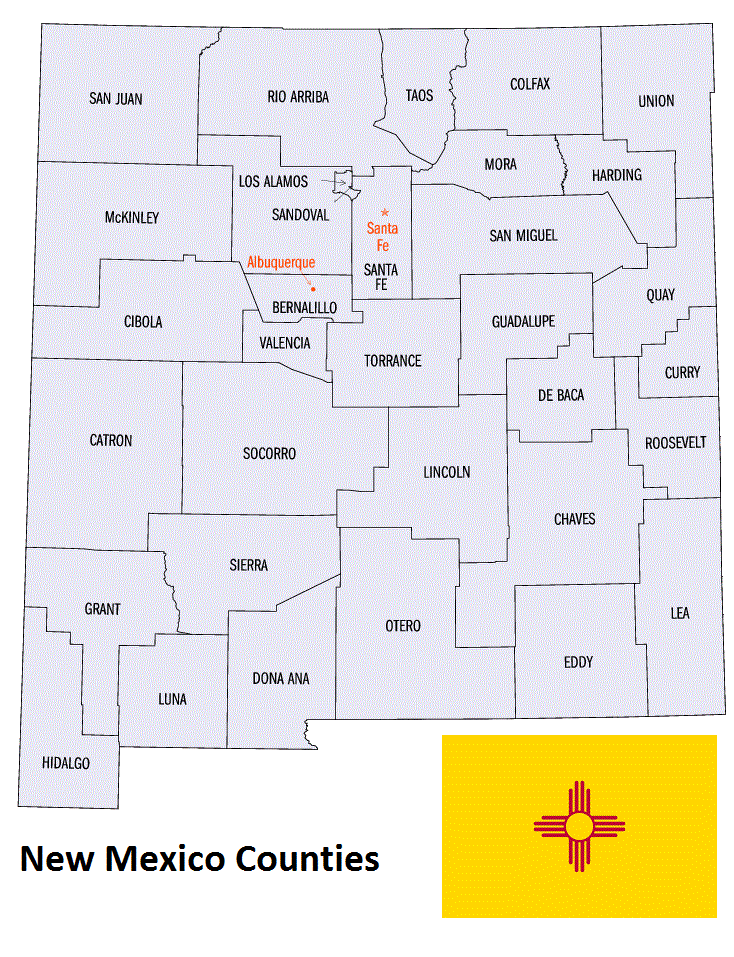List of All Counties in New Mexico
There are a total of 33 counties in the state of New Mexico. Among them, Bernalillo County is the oldest one (established in 1852) while Cibola County is the youngest (established in 1981). With population of 670,968, Bernalillo County is the most populated. The biggest county by land area is Catron County (17,943 km²) and the smallest is Los Alamos County (282 km²). Below please see all New Mexico counties which are listed in alphabetical order.
- Bernalillo County, NM
- Catron County, NM
- Chaves County, NM
- Cibola County, NM
- Colfax County, NM
- Curry County, NM
- De Baca County, NM
- Doña Ana County, NM
- Eddy County, NM
- Grant County, NM
- Guadalupe County, NM
- Harding County, NM
- Hidalgo County, NM
- Lea County, NM
- Lincoln County, NM
- Los Alamos County, NM
- Luna County, NM
- McKinley County, NM
- Mora County, NM
- Otero County, NM
- Quay County, NM
- Rio Arriba County, NM
- Roosevelt County, NM
- Sandoval County, NM
- San Juan County, NM
- San Miguel County, NM
- Santa Fe County, NM
- Sierra County, NM
- Socorro County, NM
- Taos County, NM
- Torrance County, NM
- Union County, NM
- Valencia County, NM
Map of New Mexico Counties














































